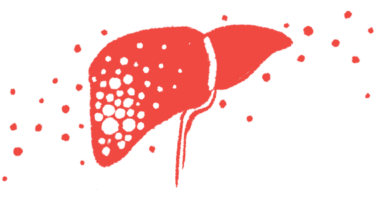Finding hope for the future of transplants in a pig liver
Medical advancements make this MASH patient optimistic

When I was in fourth grade, I was suddenly promoted into the gifted and talented program. I didn’t realize that being a mouthy brat who challenged every teacher would land me in a class designed to “cure my boredom” — the occupational hazard of a kid who read a little faster and questioned a little harder than her peers. I wasn’t sure what to expect, but once I learned about all the exclusive field trips, I was all in.
One of our first trips was unforgettable. We were invited to a local university to watch a calf receive an artificial heart transplant. This was before animal testing became as controversial as it is today. The experiment was meant to determine whether an artificial heart could sustain life, without putting a human patient at risk if it failed. I never found out how long that calf lived, but I like to think its sacrifice helped pave the way for countless lives saved through cardiac innovation.
A few years later, my mother received her first heart valve transplant — made from a pig’s heart. For decades, porcine valves were considered the gold standard, even though they carried risks and often required replacement. Our family was grateful to the animal that helped save her.
So when I read about a successful pig-to-human liver transplant last week, it hit close to home.
A reason to hope
This wasn’t the first xenotransplantation (that’s the scientific term for cross-species organ transplants), but each new attempt builds on the last. Every experiment brings researchers a little closer to making this kind of transplant safer, more effective, and — one day — routine.
When my mom had that first surgery, I was still a teenager trying to figure out life — balancing high school drama with the terrifying reality that my mother’s heart was being replaced by part of a pig’s. My dad was scared, my siblings and I were confused, but we all shared one fragile thread of hope. That operation gave us 10 more years with her. She eventually passed away after a second valve replacement, but those extra years were a gift we never stopped being thankful for.
Today, as technology accelerates, the future of organ transplantation — especially liver transplants — feels brighter. More people are living with liver disease, and for those of us familiar with metabolic dysfunction-associated steatohepatitis (MASH), the promise of xenotransplantation feels downright revolutionary. If it can save lives, I say try it.
And because life always finds a way to mix the profound with the ridiculous, I couldn’t help but think of that “spider-pig” scene from “The Simpsons.” “Spider-pig, spider-pig, does whatever a spider-pig does,” Homer sings. Maybe this new “pig superhero” deserves a verse of its own — for giving us a reason to hope that, someday, a pig liver might save a human life.
Note: Liver Disease News is strictly a news and information website about the disease. It does not provide medical advice, diagnosis, or treatment. This content is not intended to be a substitute for professional medical advice, diagnosis, or treatment. Always seek the advice of your physician or other qualified health provider with any questions you may have regarding a medical condition. Never disregard professional medical advice or delay in seeking it because of something you have read on this website. The opinions expressed in this column are not those of Liver Disease News or its parent company, Bionews, and are intended to spark discussion about issues pertaining to liver disease.








Leave a comment
Fill in the required fields to post. Your email address will not be published.